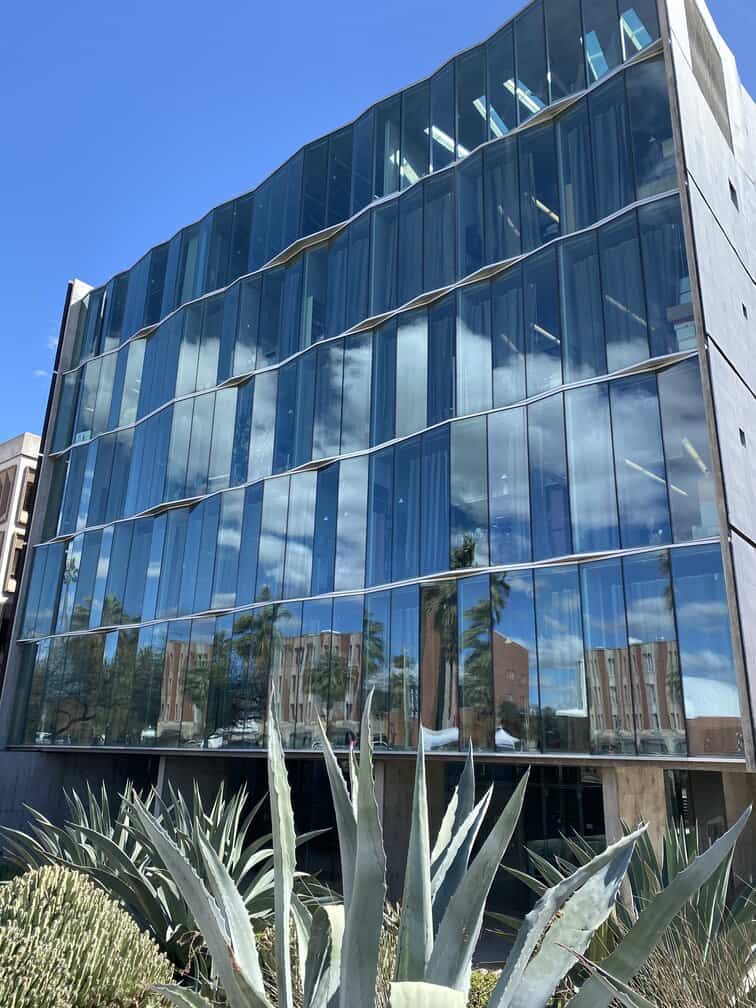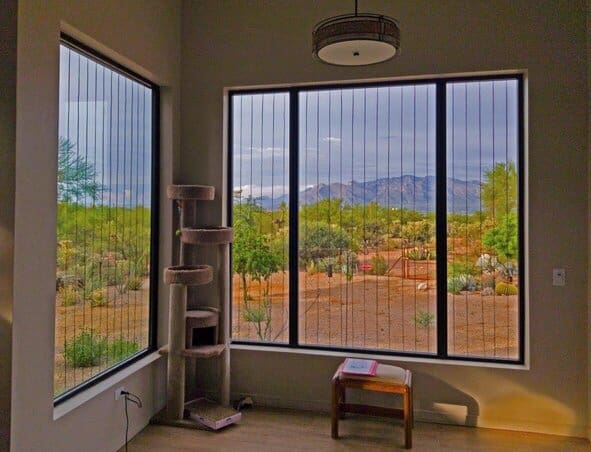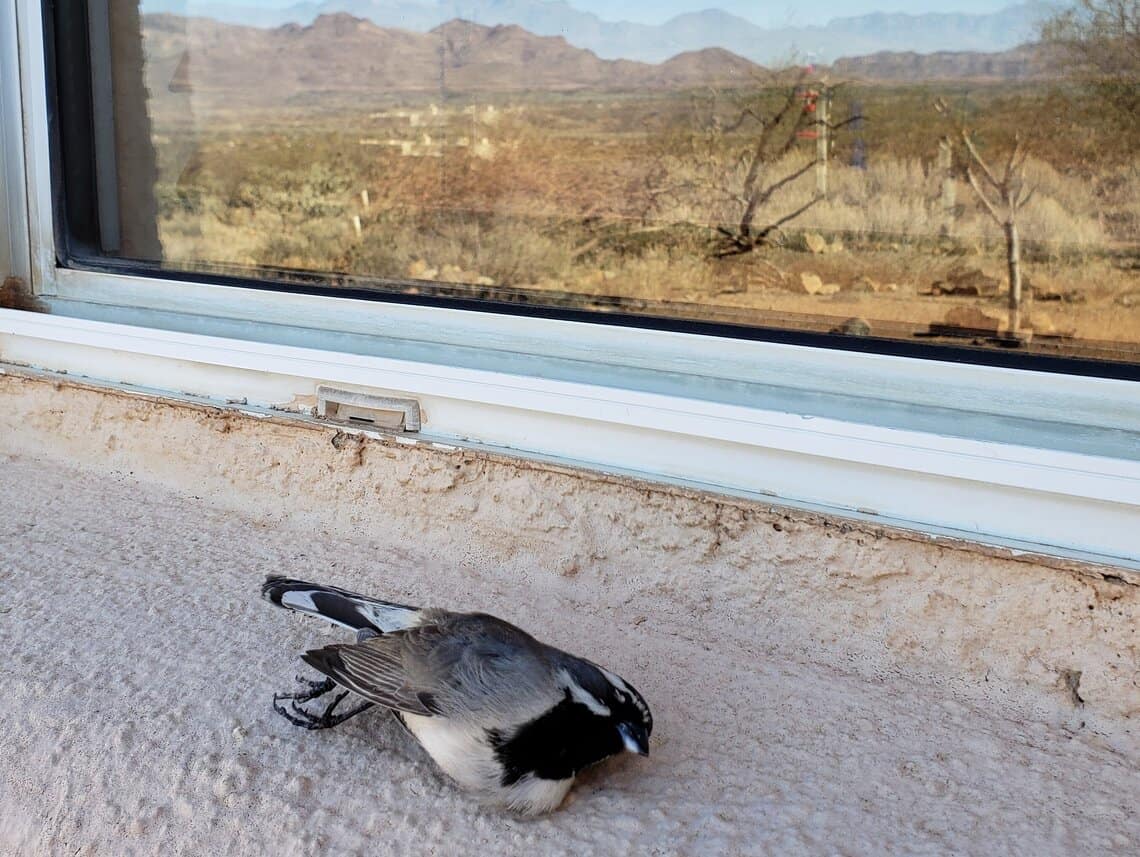By Olya Phillips, Community Science Coordinator, Tucson Audubon
Tucson, like many other cities, is experiencing rapid urbanization leading to habitat loss for many bird species. Now more than ever, birds are found near buildings where they may collide with windows, resulting in injury or death. While threats to migratory birds at high-rise buildings have gotten the most attention, most fatalities actually occur in low-rise buildings and residential areas. Birds often confuse reflected sky and vegetation for real habitat and fly into glass. Birds that hit windows get injured, become stunned and highly susceptible to predators, or die on impact.
In fact, 365 million to 1 billion birds die from window collisions every year in the U.S. alone. Likewise, artificial lights and skyglow in metropolitan areas can be confusing, throwing disoriented birds off their migration paths. Exhausted birds become vulnerable to other urban threats and window strikes. Safe Light and Lights Out programs that turn off or reduce excess lighting in cities during migration months are becoming more common, but most concentrate on the eastern part of the country. Every year, the millions of birds that travel through Arizona on their migratory pathways are at risk.

Tucson Audubon Society is joining the ranks of other cities across the nation to enact a Bird-safe Buildings program to reduce the frequency of window strikes in both residential and commercial buildings. Currently, no such program exists in Tucson, leaving birds that migrate through our area vulnerable. Tucson Audubon is working with community members to study the impacts of collisions in the area, raise awareness of the issue, and offer viable solutions to reduce strikes.
In 2021, we set out to collect data by recruiting community scientists to report window strikes at home, as well as conducted organized surveys during peak migration. The data we gather will help us identify which species may be most vulnerable and which areas pose the highest risk. But most importantly, it will help us demonstrate the scope of the problem so that we can urge building managers to turn off lights during peak migration for their safe passage. As part of our efforts, we also contribute all gathered data to online platforms tracking this issue, like dBird, iNaturalist, and Global Collision Mapper. Previously, there have been very few submissions for our area.
Concurrent with our volunteer-led surveys of metropolitan areas, we obtained estimates of local migration intensity using the BirdCast website, which provides migration forecasts for the United States using weather surveillance radar. This allowed us to identify large migration events in our area, determine whether these events were associated with a higher incidence of window strikes, and send out lights out alerts to the public on social media.

For homeowners that are looking to reduce threats to birds in their yards, we encourage them to begin by identifying their most problematic windows. Are there windows that you have seen strikes occur? Windows facing feeders and water features? Windows creating a mirror-like effect? Target those windows first and work your way around the house. For the best results, position feeders 0-3 feet away from a window so high-speed collisions are unlikely to occur. Turn off indoor lighting when not in use and direct all outdoor lighting downwards to minimize light pollution. Most importantly, make windows visible to birds by treating the exterior of the glass with decals, or other methods listed on our website, spacing them 2 inches apart to protect even our smallest species. We offer an array of DIY and purchase solutions at multiple price points on our website. We also provide free kits of vinyl decals that are available for pickup at our Nature Shop during store hours.
We’ve also formed a strong partnership with Tucson Wildlife Center who rehabilitates injured birds and helps to distribute free decal kits to prevent future collisions. All the collected carcasses serve a purpose too. They are given to Liberty Wildlife Rehab Center in Phoenix where they have a Non-eagle Feather Repository Program that distributes the feathers to Native American tribes for ceremonial needs.
In 2022 and beyond, we will continue to educate the public on the issue to create a safe passage and residency for millions of birds in urban, suburban, and rural settings.
Author’s Note: the launch of Tucson Audubon’s Bird-safe Buildings program is made possible by grants from National Audubon, Tracy Aviary, and private donations.

